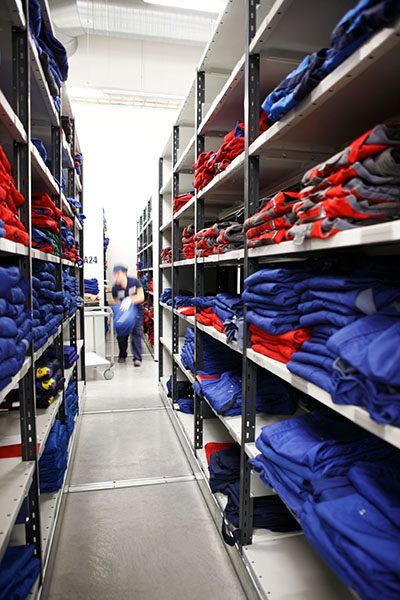An efficient workwear supply chain provides benefits for our customers
Unlike the fashion industry, procurement of workwear is not driven by rapid trend cycles. However, the workwear must be available as agreed – otherwise, work cannot be done. In this sector, quality, reliability and dependable deliveries are decisive.
 Individual worweak gaining popularity
Individual worweak gaining popularity
The need for individualisation is clearly increasing and this is also apparent at Lindström. The colours, details and materials of workwear are carefully selected to create a consistent company image. The varying needs of companies give rise to different challenges for suppliers of workwear. Sometimes, only a few pieces of individually designed workwear are ordered in each size, while the order volumes for more popular models are in the thousands. Procurement must be planned to ensure that users always have clothing at the start of the working day, whichever category the
workwear belongs to.
Centered around the customer needs
When supply models are built, it is essential to balance customer needs with cost efficiency. Lindström aims to manufacture clothing only when customers need it. This enables Lindström to react quickly to changing customer needs, use textile raw materials sensibly and avoid tying up capital in inventory.
“Our solution is to minimise the lead time of the workwear manufacturing and delivery process and to eliminate all of the unnecessary phases in the process,” says Jarmo Vahtervuo, who is responsible for developing supply channels at Lindström. Value added time is what the customer is willing to pay for and unnecessary phases are those in which the process stops during warehousing, transportation or waiting for supplies. “The aim is to deliver workwear to customers directly from the manufacturing facility, with no intermediate warehousing. This minimises the lead
time and ensures that the warehouse does not get filled up with items that are not needed. This is good for the customer and for Lindström,” Vahtervuo says.
Unlike the fashion industry, procurement of workwear is not driven by rapid trend cycles. However, the workwear must be available as agreed – otherwise, work cannot be done. In this sector, quality, reliability and dependable deliveries are decisive.